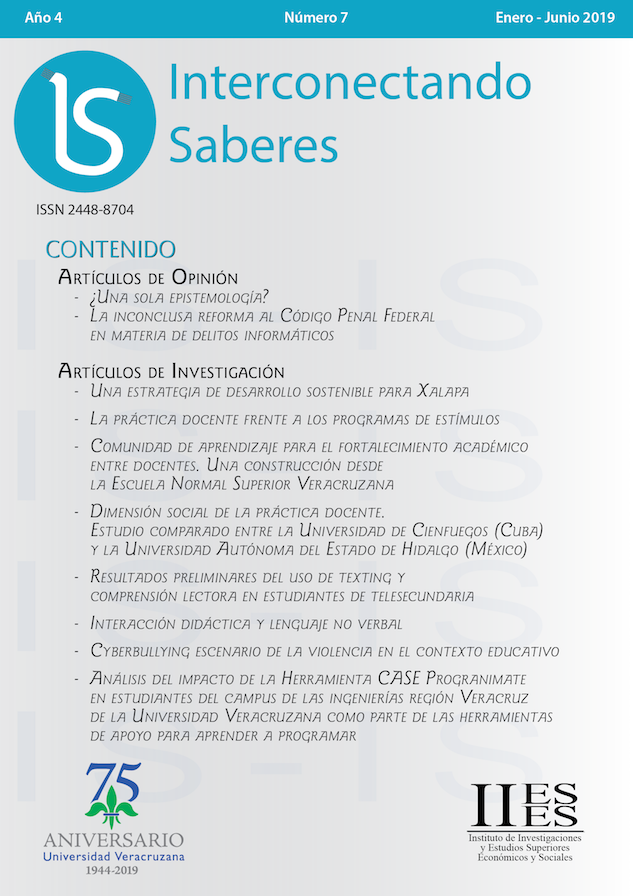Abstract
The human reasoning is the leading factor in the programming learning process, and the support with a variety of techniques and elements are part of the success, these elements are related to the tools that can work as a guide to obtain the computing solution to a problem such as flow diagrams, pseudo codes and development of some programming language. This article aims to support the tasks about building solutions to programming issues.References
Apolinario García, G. C. (2006). Algoritmos y Diagramas de Flujo Aplicados en C++. Perú: Megabyte.
Berenguel Gómez, J. (2016). Desarrollo de aplicaciones web distribuidas UF1846. Arganda del Rey, Madrid: Paraninfo.
Cairó, O. (2006). Metodología de la Programación. Algoritmos, diagramas de flujo y programas. Ciudad de México: Alfaomega.
Ceballos Sierra, F. J. (1990). Curso de programación con C. Microsoft C. Ciudad de México: Macrobit.
Deitel, H., & Deitel, P. (2008). Cómo Programar en C++. Ciudad de México: Pearson Educación.
Facultad de Ingeniería Mecánica y Ciencias Navales, Región Veracruz, Universidad Veracruzana. (20 de junio de 2019). https://www.uv.mx/veracruz/fimcn. Obtenido de https://www.uv.mx/veracruz/fimcn: https://www.uv.mx/veracruz/fimcn/noticias/calendarioajustado/
Gottfried, B. (2005). Programación en C. Ciudad de México: Mc Graw Hill.
International Organization for Standardization ISO. (12 de abril de 2011). ISO. Obtenido de ISO: http://www.iso-9899.info/n1570.html
Joyanes Aguilar, L. (2008). Fundamentos de Programación. Ciudad de México: Mc Graw Hill.
Joyanes Aguilar, L. (2013). Fundamentos generales de programación. Ciudad de México: Mc Graw Hill.
Joyanes Aguilar, L., & Sánchez García, L. (2006). Programación en C++. Un enfoque práctico. Aravaca: Mc Graw Hill.
Kendall, K. E., & Kendall, J. (2005). Análisis y diseño de sistemas. Ciudad de México: Pearson Educación.
Scott, A. (01 de 04 de 2019). Progranimate. Obtenido de Progranimate: www.progranimate.com


